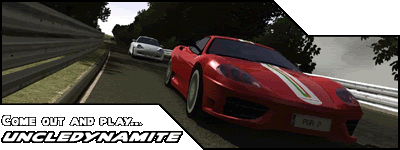| Forums | Chat | News | Contact Us | Register |
PSU Social
|
 |
PSU: Is it ok if I donate my kids to PSU?
| Forums | Chat | News | Contact Us | Register |
PSU Social
|
 |
| Home | Forum | Chat | Wiki | Social | AGN | PS2 Stats |
|
|
|
||||||
 |
|
|
Thread Tools | Search this Thread | Display Modes |
|
|
|
|
[Ignore Me] #1 | ||
|
Lieutenant Colonel
|
Seems crazy, but it's an interesting idea:
Earth sows its seeds in space ----- 23 February 2004 PHILIP BALL The Earth could be scattering the seeds of life throughout our Galaxy. Microbes could ride on specks of dust, powered by the Sun's rays, says William Napier, an astronomer at the Armagh Observatory in Northern Ireland. Scientists have pondered whether life might ride between star systems ever since the nineteenth century. Some think that a collision between a life-bearing planet and another celestial body could scatter stones and boulders into space carrying living organisms. These deep-frozen spores could then make their way to other worlds - an idea called 'panspermia'. But the chances are stacked against such an event. Spores would have to survive the meteor impact and be thrown into space. The boulder would then have to leave the solar system and land on another life-supporting planet. It would have to get there quickly, too. The radiation streaming through space will cook any organisms in space rocks. Typically, says Napier, "the boulders will be sterile by the time they are ejected from the solar system". But microbes might survive if they can escape the Sun's gravity more quickly. And that might happen, says Napier, if the rocks they sit on are first ground to dust1. The Earth and her sister planets travel through a cloud of grains called zodiacal dust. This is the debris from collisions in the asteroid belt and from the passage of comets. This dust should sand-blast anything passing through it, says Napier. This process could grind a one-metre boulder down in 20,000-200,000 years, he estimates. If a comet breaks up, thickening the dust, as happens several times each million years, the process could take as little as five centuries. - Solar sailing A grain less than a tenth of a millimetre across would still be capable of carrying microscopic life, says Napier. And the pressure of sunlight can quickly blow grains this small out of the solar system. The same force might one day propel spacecraft through the cosmos. Such a grain could travel about six light years from Earth in 70,000 years - far enough to reach other stars. We could be surrounded by a huge 'biodisk' of frozen organisms floating on grains of rock, says Napier, all of which can wander in and out of our solar system quite easily. "The solar system is as leaky as a sieve," he says. Earth should spread its seed widest when we pass through a giant molecular cloud, a mass of dusty material from which stars are born. This has happened about five times since life appeared on Earth. Each time, Napier estimates about three billion trillion microbes passed from Earth into the cloud. The chances of some of these finding their way to an Earth-like planet are quite high, he says. A similar process could even explain how the Earth wound up hosting life in the first place, he adds. ----- Again, seems crazy, but it's certainly made me want to read a little more about the theory. Discuss.
__________________

|
||
|
|

|
|
|
[Ignore Me] #6 | ||
|
Thanx Dhark, this astrobo doesn't have a nickel after spending his empty beer cans on sterno.
/astrobo 4 life
__________________
"Blessed are the Peacemakers, for they shall be called Sons and Daughters of God." - Jesus Christ "Blessed are those who Hunger and Thirst for righteousness, for they shall be satisfied." - Jesus Christ PlanetSide player, retired |
|||
|
|

|
 |
|
|
| Bookmarks |







|
|